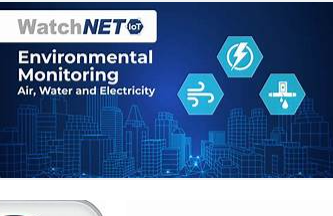Why Environmental Monitoring is Important?
Environmental Monitoring
What is Environmental Monitoring?
Environmental Monitoring is the observation and study of the environment. When we talk about science, we want to collect information to gain knowledge For example, environmental analysis has identified its role in the first three steps of the ladder and is rooted in the scientific method.

Objective observations lead to better information, which in turn yields valuable information. Story-based learning often leads to a better understanding of the problem/situation, thereby improving rational decision-making. However, it is important to understand that other factors, including political, economic, and social factors, influence the decision.
Purpose of Environmental Monitoring
The main purpose of environmental monitoring is to help understand the natural environment and protect it from the negative effects of human activities. This process is an integral part of environmental impact assessments and the results can directly determine whether projects are specifically supported.
An environmental monitoring evaluation may include establishing a quality standard, identifying environmental trends, identifying fluctuations, determining project success, and verifying compliance with environmental goals.
Environmental monitoring also occurs in critical environments, such as clean rooms. Take a closer look at this article on how environmental monitoring devices can reduce the likelihood of pollution. Environmental criteria are sometimes necessary, but the location makes it challenging to plug power and signal wires into and out of the sensors. A wireless connection is required in such situations.
Also, Read:
- Solid Waste Management, Definitions, Types, and Methods
- Greenhouse Gas its Effects and Greenhouse Gases emissions
- Effects of Acid Rain, Its Most Important Effects on Human
- Watershed Management its Developmental Projects and its Significance
For what purpose are Environmental Monitoring Specialists Looking?
Environmental monitors typically focus on four broad areas – air, land, water, and life. For a better understanding of these components and their importance, please read the following:
Air Quality
Air pollution is a growing global problem in developed and less developed countries. In addition, the EU h as established air pollution standards that it expects all member states to meet. Polluted air not only affects the planet’s health but also has negative consequences on human well-being. Since air pollution is strongly influenced by wind, data are almost always considered when performing environmental monitoring on air quality.

Topography is also defined as natural features such as valleys and mountains that can interfere with the lateral mixing effect of the atmosphere. Due to air mixing caused by convection, can lead to unusually high levels of air pollution.
Soil Quality Monitoring
Agriculture is an important part of global food production, with the restoration of forests and forests being the key to cleaner air without CO2. A large number of environmental monitoring activities are therefore aimed at well-being. This includes monitoring factors such as erosion, soil contamination, and salinity.
Water level monitoring
Collecting and analyzing water quality information is an important part of ensuring that lakes, rivers, oceans, seaports, and other water bodies are safe and clean. Chemical conditions are most important, experts focus on the presence of oxygen, food, oil, pesticides, and metals. Physical conditions such as flow, temperature, sediment, and erosion are taken into account, and measurements of plant and animal life are used to determine well-being.

As the world continues to grow and expand. Environmental stewardship has become an important part of ensuring the planet remains safe, healthy, and strong.
Reasons for Environmental Monitoring
- The benefits of environmental management depend on its ability to improve society’s quality of life by demonstrating the relationship between the environment and health.
- Converting environmental monitoring data into information and informing the public about current events is crucial to informing citizens about environmental conditions.
Useful applications for environmental monitoring include public water protection, risk management, radioactive waste disposal, pollution analysis, and assessment of pollutants affecting local air quality and human health, on the safety and management of natural resources such as soil and water. climate forecasting, resource allocation for land use and economic development and energy analysis and business intelligence, determination of population density in relation to natural resources and economic development, economic mapping of nature, conservation of endemic species, and global climate change.
Final Thoughts
Guys you have read the topic carefully. I have briefly explained Environmental Monitoring in this post. If you have any questions related to this topic, you can ask in the comment section box. Thank You!